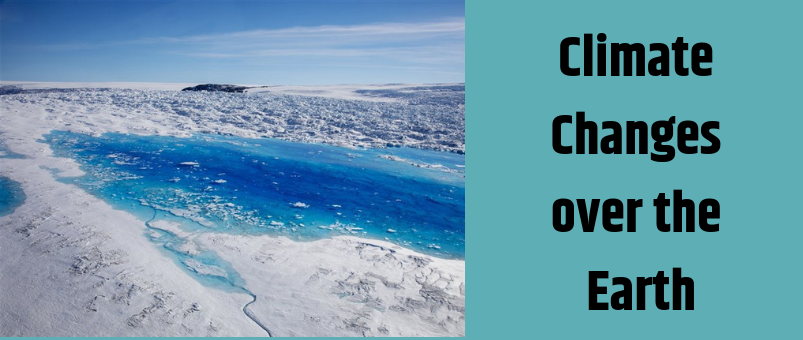Climate change is the fluctuations of the Earth’s climate as a whole or its individual regions over time, expressed in statistically significant deviations of weather parameters from multiyear values over a period of time from decades to millions of years.
Changes in both the average values of weather parameters and changes in the frequency of extreme weather events are taken into account. The study of climate change is the science of paleoclimatology. Climate change is caused by dynamic processes on Earth, external influences, such as fluctuations in the intensity of solar radiation. According to one version, it is predominantly influenced by human activity. Recently, the term “climate change” is used as a rule (especially in the context of environmental policy) to refer to changes in the current climate.
Climate change factors
Climate change is caused by changes in the Earth’s atmosphere, processes occurring in other parts of the Earth, such as oceans and glaciers, as well as effects associated with human activities. External processes that form the climate are:
- changes in solar radiation and the Earth’s orbit;
- change in size;
- relief and relative position of continents and oceans;
- changing the luminosity of the sun changes in the parameters of the orbit and the axis of the Earth;
- a change in the transparency of the atmosphere and its composition as a result of changes in the Earth’s volcanic activity;
- changing the concentration of greenhouse gases (CO2 and CH4) in the atmosphere;
- change in the reflectivity of the Earth’s surface (albedo);
- change in the amount of heat present in the depths of the ocean;
- change in the natural underlayer of the Earth between the core and the crust, due to the pumping of oil and gas.
Climate change on Earth
Weather is the daily state of the atmosphere. Weather is a chaotic nonlinear dynamic system. Climate is the average weather condition and is predictable. Climate includes indicators such as average temperature, rainfall, sunny days and other variables that can be measured in a particular location. However, on Earth, there are also processes that can affect the climate.
Glacierization
Glaciers are recognized as one of the most sensitive indicators of climate change. They significantly increase in size during climate cooling and decrease during climate warming. Glaciers grow and melt due to natural changes and under the influence of external influences. In the past century, glaciers were not able to regenerate enough ice during the winters to regain ice loss during the summer months.
The most significant climatic processes in the last few million years are a change of glacial (glacial eras) and interglacial eras of the current glacial period, due to changes in the orbit and axis of the Earth. Changes in the state of continental ice and fluctuations in sea level within 130 meters are key consequences of climate change in most regions.
World ocean variability
On a scale of decades, climate change may be the result of the interaction of the atmosphere and the world’s ocean. Many climate fluctuations, including the most famous southern El Niño oscillation, as well as the North Atlantic and Arctic oscillations, are happened due in part to the ability of the world’s oceans to accumulate heat energy and transfer this energy to different parts of the ocean. On a longer scale, thermohaline circulation occurs in the oceans, which plays a key role in the redistribution of heat and can significantly affect the climate.
Climate memory
In a more general aspect, the variability of the climate system is a form of hysteresis, that is, it means that the present climate state is not only a consequence of the influence of certain factors but also the entire history of its state. For example, in ten years the droughts of the lake partially dry up, the plants die, and the area of deserts increases. These conditions, in turn, cause less heavy rains in subsequent years following the drought. Climate change is a self-regulating process, as the environment reacts in a certain way to external influences, and, by changing itself, is able to affect the climate.






